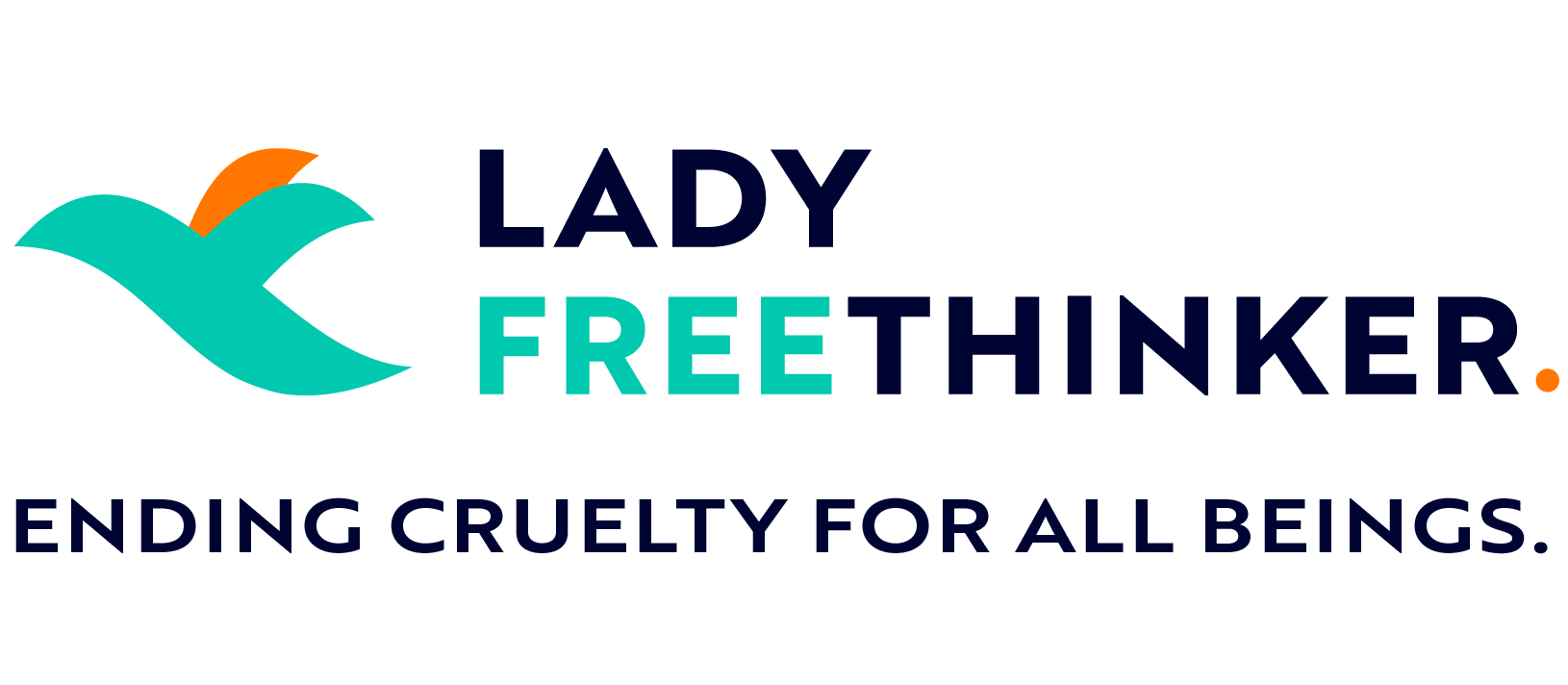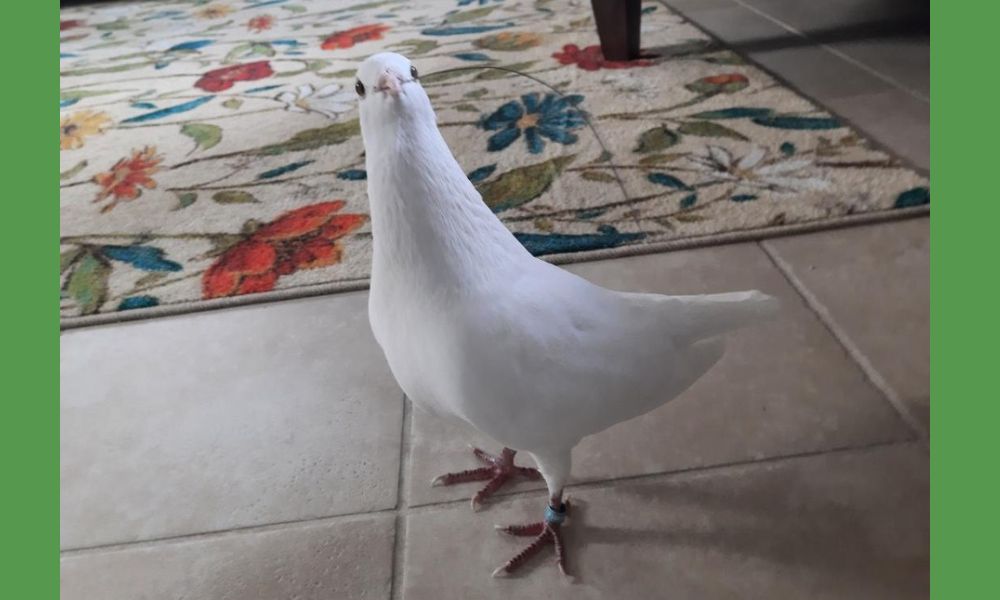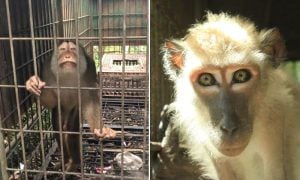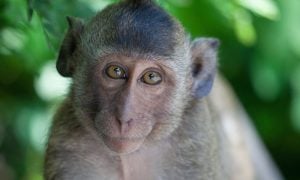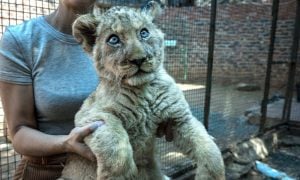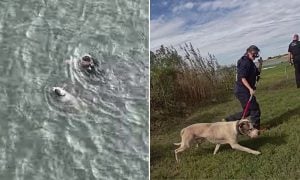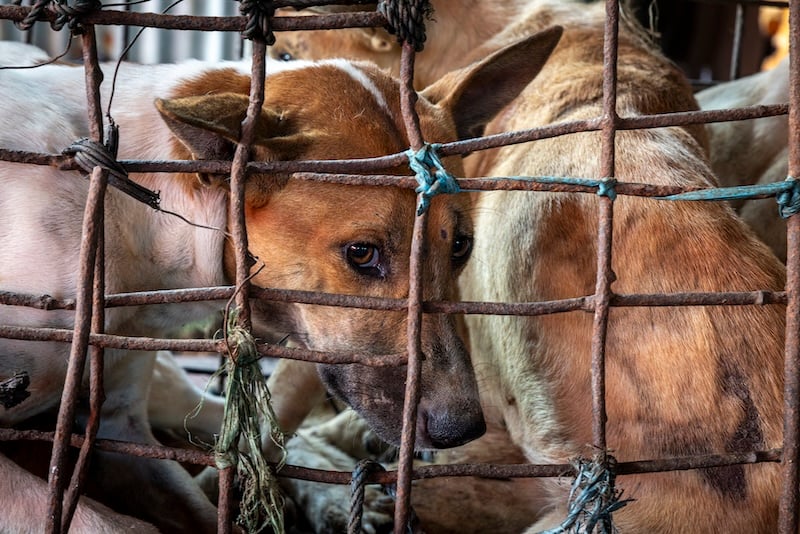June 13th is National Pigeon Appreciation Day. And this year, Oregon-based rescuer Sindy Harris is planning a protest over the way these incredible birds are exploited nationwide.
The peaceful protest, which will take place in Sacramento in collaboration with nonprofit Palomacy, will focus on how pigeons are abused for “entertainment” — including for ceremonial releases, pigeon racing and gambling, and in dog “training” — with no welfare laws to protect them.
Harris, who owns a sanctuary of more than 30 rescued birds and is helping to build aviaries for others throughout the state, said the goal of the June 13 protest is simple — to bring awareness to the fact that pigeons are intelligent, sensitive birds who deserve the same care and respect as other more “popular” species.
Thankfully, the public — and the media — are starting to get it.
This year, a white king pigeon who had been dyed pink made headlines after being discovered wandering — aimlessly and bedraggled — in a New York City park. Despite the best possible care, the bird, whom rehabilitators named Flamingo, died after a few days, likely from inhaling toxic fumes from the dye.
“The Wild Bird Fund in NYC did a sensational job getting the NY Times to run an article about Flamingo and why domesticated pigeons should never be released or dyed,” Harris said. “We can, and must, build on that momentum. This is the year to be an activist.”
A Pigeon Supporter, And Sanctuary, Are Born
Harris’s husband Steve was volunteering with Adopt a Highway in California when he noticed a tiny white bird who made herself at home under his car — for a time. Then, the pigeon walked directly into traffic, causing Steve to stage an impromptu rescue of the bird, whom the couple later named Glory.
In relaying the story that catalyzed a sanctuary on her website, Harris noted that Glory, like many other domesticated birds, was asking for help.
“It is worth noting here that any white pigeon or banded bird is domesticated and cannot live wild and free,” Harris wrote. “The bird is making itself noticed because it needs immediate help, safety, food, and water. It is essentially choosing you to help.”
The logical thing to do was clearly to build an aviary in their backyard to house Glory — and then to keep building them for others.
Since Glory’s rescue, Harris has expanded her sanctuary to be a forever home for 33 rescued pigeons. She’s also built eight other aviaries, empowering other responsible rescuers.
She’s also become a dedicated advocate for pigeons everywhere.
The social members of her flock serve as ambassadors, accompanying Harris on outings to community events, school groups, and even a bookstore to teach kindness and respect for all creatures.
“We hope the outreach will support and encourage all people who love animals to view pigeons, domesticated or feral, as the gentle, highly-intelligent and loving birds they are,” Harris wrote on Sindy’s Pigeon Service’s website.
Harris added that she’s grateful to other organizations, including Palomacy, for their dedicated efforts on behalf of the birds, too.
“Palomacy and other pigeon rescue groups have done a great job getting the word out about the need to rescue domesticated pigeons,” she said. “But all of the rescues are full. When someone rescues now, particularly a large number of birds, there is no place for these birds to go.”
It’s one of the main reasons that Harris founded Sindy’s Pigeon Service.
“I wanted to build aviaries so that the rescued pigeons had a place to go,” she said.

Sindy Harris’s Sanctuary in Jacksonville (Courtesy of Sindy Harris)
Rescue Stories That Highlight An Industry of Abuse
Jake and Rosie, two white pigeons dyed green and likely released for a wedding, are among the survivors who found a happier life — and lifelong partners in each other — at Harris’s sanctuary in Jacksonville.
Both birds are permanently and totally blind from the dye, Harris said.
Sadly, Harris and other pigeon rescuers — including California-based rescue Palomacy — have seen far too many white pigeons dyed and “set free” for ceremonies, including weddings, funerals, and gender reveals.
As domesticated birds, white pigeons have no survival instincts, and the releases leave them vulnerable to predator attacks, starvation, and injury, Harris said.
But an additional layer of cruelty is what happens when two white parent birds turn out babies who aren’t the pure white prized by the industry, typically after about four generations of birds, Harris said.
“Non-white birds are typically thrown away,” Harris said. “I have many a pigeon in my sanctuary that is white with black markings.”
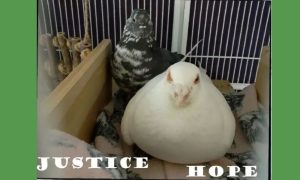
Justice and Hope (Courtesy of Sindy’s Pigeon Service/Instagram)
The pigeons’ stories of abuse and exploitation are as diverse as the birds now happily going about their lives in the sanctuary.
Justice, a sweet female pigeon, was one of 17 birds dumped in an industrial parking lot in Concord, California. She has now found a life partner in Hope, a brilliant white male homing pigeon found in someone’s backyard who also ended up at Harris’s sanctuary.
Theron, Jacky, and Chad — three additional residents of the aviary — likely were used in racing. Rescuers found Theron injured from a hawk attack and full of maggots on a road, while Jacky and Chad were found at a truck filling station during a smoky wildfire season in Oregon.
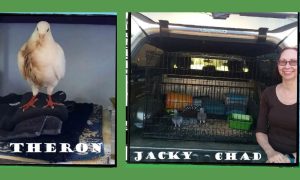
Theron, Jacky, and Chad (Courtesy of Sindy’s Pigeon Service/Instagram)
Whitey, who now lives happily with one of Harris’s friends at a separate aviary, belonged to a man who wrapped the bird’s feathers with electrical tape and hid her in the bushes to “train” his hunting dogs, according to Harris.
Trooper, a sweet pigeon who was found by a couple in Oregon, required 20 stitches and veterinary care for injuries. When the couple called Trooper’s previous owner, the response was typical of what rescuers too often see, Harris said.
“He told the couple to just release the bird and it would fly home,” Harris said. “He didn’t seem to care that ‘it’ couldn’t fly. Trooper got the medical care she needed and now lives in my aviary.”
For those interested in hearing more heartwarming rescue stories, you can check out Sindy’s Pigeon Service’s Instagram here.
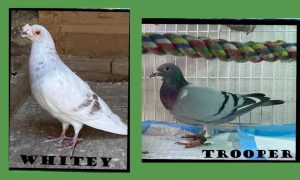
Whitey and Trooper (Courtesy of Sindy’s Pigeon Service/Instagram)
Take Action For Pigeons – And All Birds – Today!
Harris said people can help pigeons by being aware of domesticated birds in need of help in their own communities — such as all white birds, birds who are banded, or both.
She recommends that people catch pigeons in distress, place them in a secure box or crate with water and bird seed, and then research options — including looking up local rescues, posting on pigeon rescue sites, or keeping the pigeon as a companion animal if you can meet the bird’s needs and your local laws allow you to do so.
If rehoming a distressed bird, Harris encourages people to do their due diligence to ensure the bird won’t be going to a puppy “trainer” or breeder.
“Finally, if you own a pigeon or pigeons, watch them, enjoy them, let them make you feel alive because they will,” she said. “They will remind you what is good in the world.”
You can help speak up for pigeons and other birds by learning more about the cruelties they face and avoiding them. Check out LFT’s story about five cruel bird acts to avoid here if you haven’t already!
You also can speak up for birds by supporting legislation that will create a better world for them — such as this bill pending in the NYC council, which will require buildings to turn off their lights at night to reduce fatal bird collisions.
